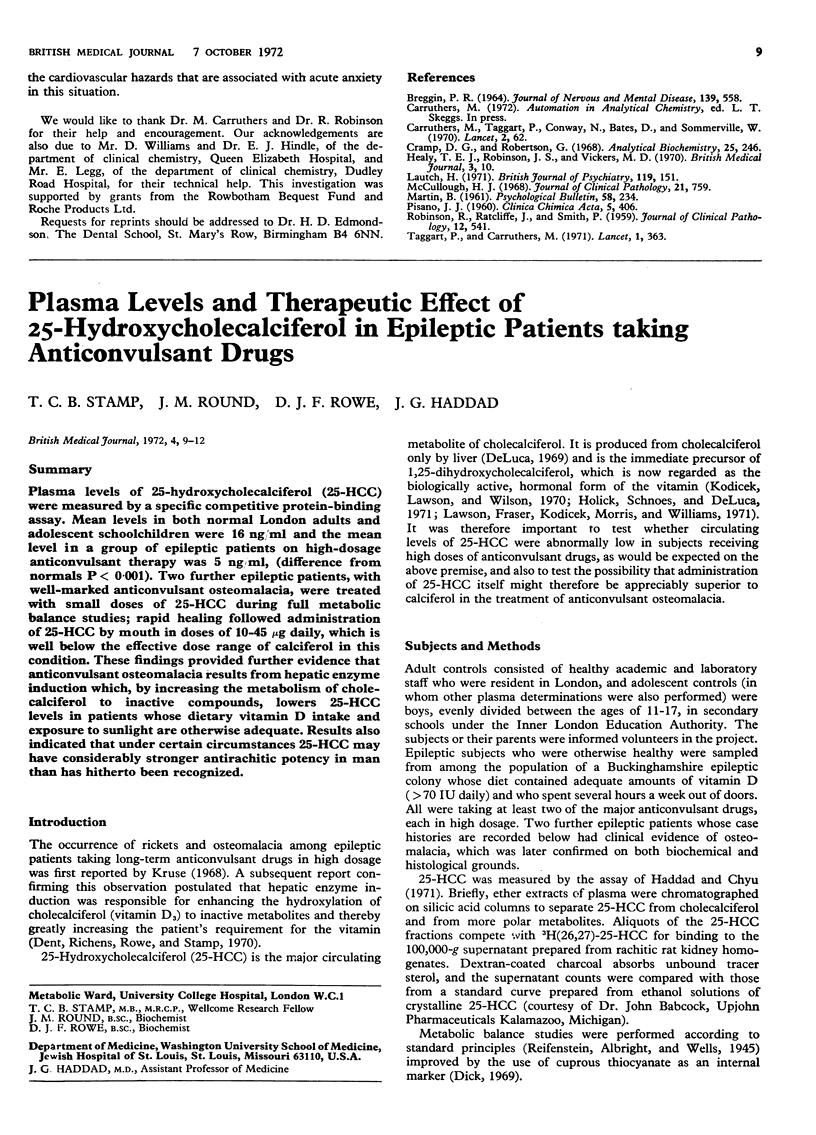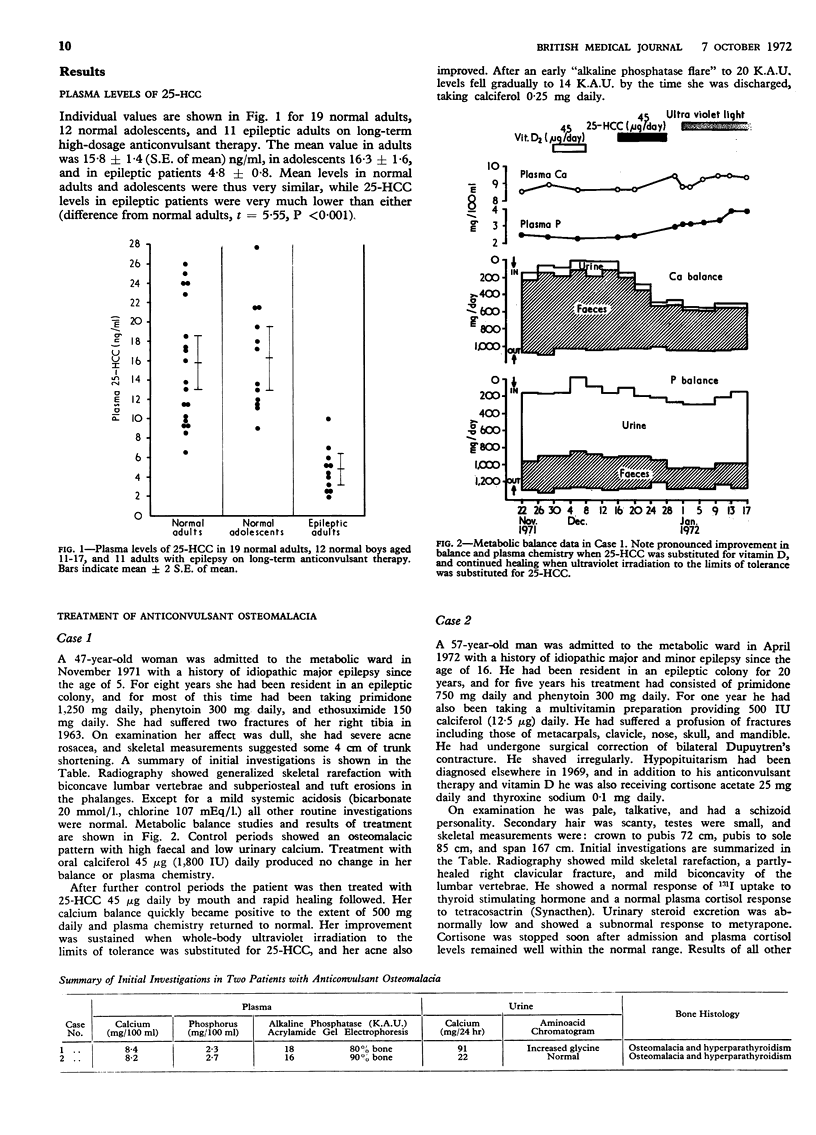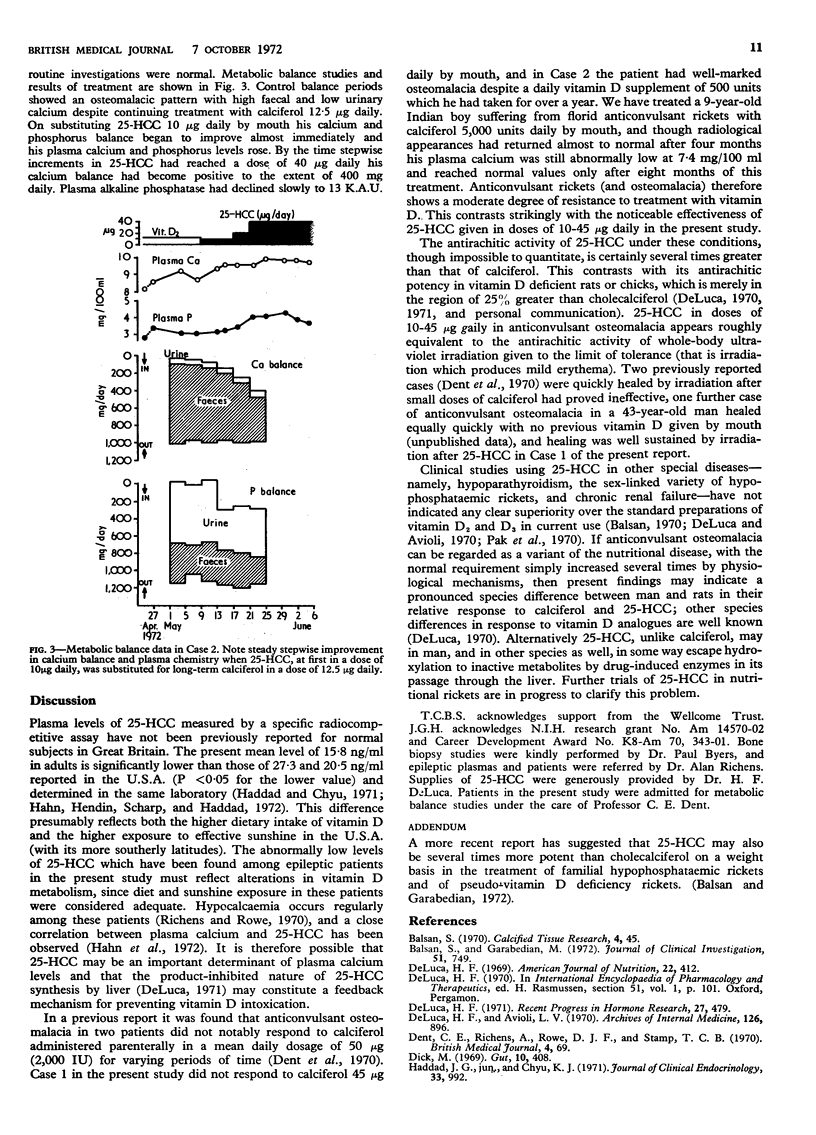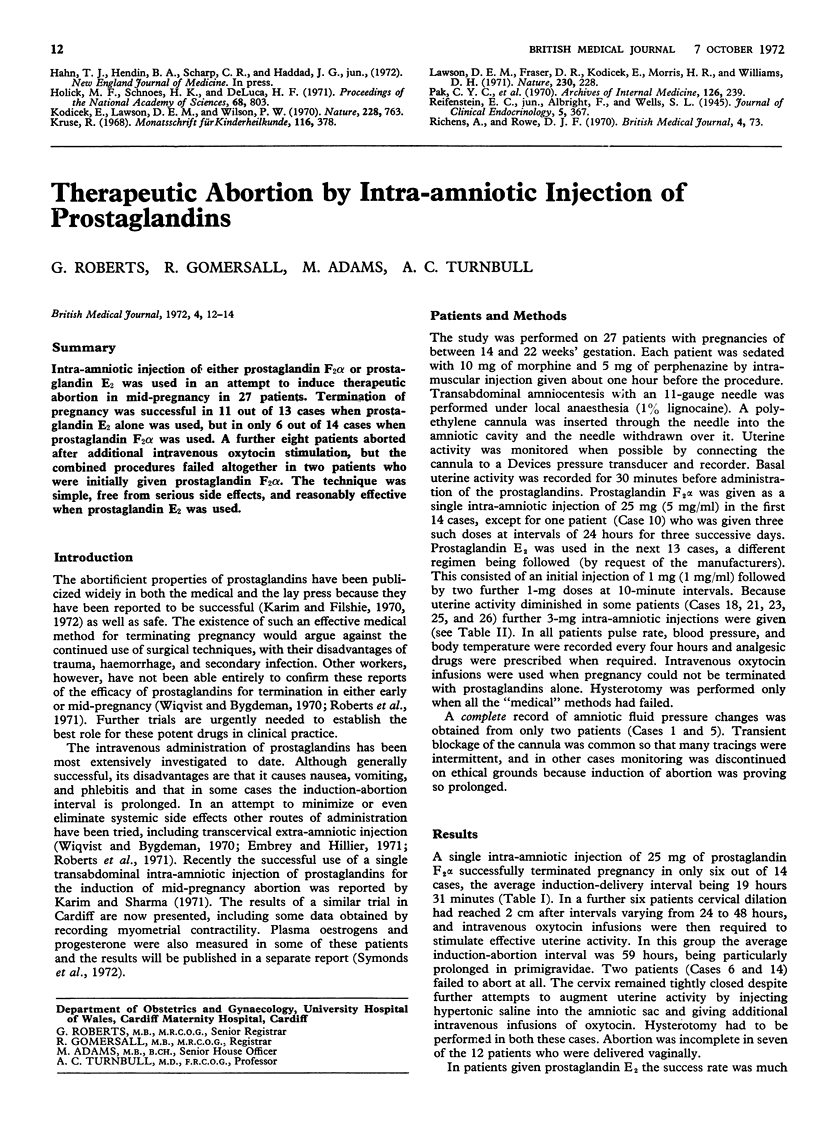Abstract
Plasma levels of 25-hydroxycholecalciferol (25-HCC) were measured by a specific competitive protein-binding assay. Mean levels in both normal London adults and adolescent schoolchildren were 16 ng/ml and the mean level in a group of epileptic patients on high-dosage anticonvulsant therapy was 5 ng/ml, (difference from normals P < 0·001). Two further epileptic patients, with well-marked anticonvulsant osteomalacia, were treated with small doses of 25-HCC during full metabolic balance studies; rapid healing followed administration of 25-HCC by mouth in doses of 10-45 μg daily, which is well below the effective dose range of calciferol in this condition. These findings provided further evidence that anticonvulsant osteomalacia results from hepatic enzyme induction which, by increasing the metabolism of cholecalciferol to inactive compounds, lowers 25-HCC levels in patients whose dietary vitamin D intake and exposure to sunlight are otherwise adequate. Results also indicated that under certain circumstances 25-HCC may have considerably stronger antirachitic potency in man than has hitherto been recognized.
Full text
PDF



Selected References
These references are in PubMed. This may not be the complete list of references from this article.
- Balsan S. 25-hydroxycholecalciferol: effects in idiopathic vitamin D-resistant rickets. Calcif Tissue Res. 1970;(Suppl):45–46. doi: 10.1007/BF02152346. [DOI] [PubMed] [Google Scholar]
- Balsan S., Garabedian M. 25-Hydroxycholecalciferol. A comparative study in deficiency rickets and different types of resistant rickets. J Clin Invest. 1972 Apr;51(4):749–759. doi: 10.1172/JCI106869. [DOI] [PMC free article] [PubMed] [Google Scholar]
- DeLuca H. F. 25-Hydroxycholecalciferol, the probable metabolically active form of vitamin D. Isolation, identification, and subcellular location. Am J Clin Nutr. 1969 Apr;22(4):412–424. doi: 10.1093/ajcn/22.4.412. [DOI] [PubMed] [Google Scholar]
- DeLuca H. F., Avioli L. V. Treatment of renal osteodystrophy with 25-hydroxycholecalciferol. Arch Intern Med. 1970 Nov;126(5):896–899. [PubMed] [Google Scholar]
- DeLuca H. F. The role of vitamin D and its relationship to parathyroid hormone and calcitonin. Recent Prog Horm Res. 1971;27:479–516. doi: 10.1016/b978-0-12-571127-2.50036-5. [DOI] [PubMed] [Google Scholar]
- Dent C. E., Richens A., Rowe D. J., Stamp T. C. Osteomalacia with long-term anticonvulsant therapy in epilepsy. Br Med J. 1970 Oct 10;4(5727):69–72. doi: 10.1136/bmj.4.5727.69. [DOI] [PMC free article] [PubMed] [Google Scholar]
- Dick M. Use of cuprous thiocyanate as a short-term continuous marker for faeces. Gut. 1969 May;10(5):408–412. doi: 10.1136/gut.10.5.408. [DOI] [PMC free article] [PubMed] [Google Scholar]
- Haddad J. G., Chyu K. J. Competitive protein-binding radioassay for 25-hydroxycholecalciferol. J Clin Endocrinol Metab. 1971 Dec;33(6):992–995. doi: 10.1210/jcem-33-6-992. [DOI] [PubMed] [Google Scholar]
- Holick M. F., Schnoes H. K., DeLuca H. F. Identification of 1,25-dihydroxycholecalciferol, a form of vitamin D3 metabolically active in the intestine. Proc Natl Acad Sci U S A. 1971 Apr;68(4):803–804. doi: 10.1073/pnas.68.4.803. [DOI] [PMC free article] [PubMed] [Google Scholar]
- Kodicek E., Lawson D. E., Wilson P. W. Biological activity of a polar metabolite of vitamin D. Nature. 1970 Nov 21;228(5273):763–764. doi: 10.1038/228763a0. [DOI] [PubMed] [Google Scholar]
- Kruse R. Osteopathien bei antiepileptischer Langzeittherapie (Vorläufige Mitteilung) Monatsschr Kinderheilkd. 1968 Jun;116(6):378–381. [PubMed] [Google Scholar]
- Lawson D. E., Fraser D. R., Kodicek E., Morris H. R., Williams D. H. Identification of 1,25-dihydroxycholecalciferol, a new kidney hormone controlling calcium metabolism. Nature. 1971 Mar 26;230(5291):228–230. doi: 10.1038/230228a0. [DOI] [PubMed] [Google Scholar]
- Pak C. Y., DeLuca H. F., Chavez de los Rios J. M., Suda T., Ruskin B., Delea C. S. Treatment of vitamin D-resistant hypoparathyroidism with 25-hydroxycholecalciferol. Arch Intern Med. 1970 Aug;126(2):239–247. [PubMed] [Google Scholar]


